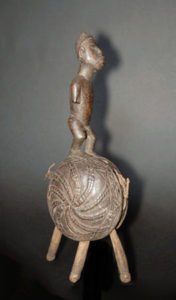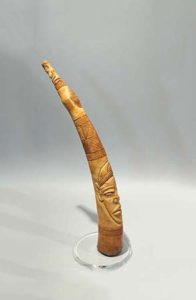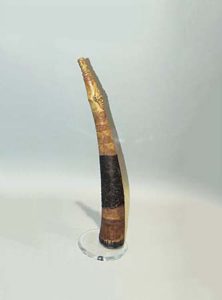The Vili people are a Central African ethnic group, established in southwestern Gabon, the Republic of Congo, Angola, and the Democratic Republic of Congo. It is a subgroup of Bantu and Kongo peoples, as they speak Vili, a Bantu language.
With the Yombe, Lumbu, Vungu, Punu, and Kugni, they live harmoniously within the former Kingdom of Loango. The Vili culture shares with the Congo people the power figure, known as “Nkisi Nkondi,” or nail fetishes that provide divine protection. The Kongo believe that the great god, Ne Kongo, brought the first sacred medicine (or nkisi) down from heaven in an earthenware vessel.
Vili artists carved with naturalistic features maternity figures, nail fetishes, figures of dogs and monkeys often carrying mirrors, nkissi (magical objects) or nails. The face masks of the Vili are characterized by a realistic design and a striking color scheme. The Vili give their masks a veritable expression of pathos by painting them black, white, and red, and leaving the mouth slightly open.
Each masquerade has a name that is revealed not by the wooden mask itself but by some other object that is part of the costume; the name refers to a proverb that conveys a moral message. The masks appear in groups to dance at important funerals and other occasions of potential disorder, serving as a kind of police force.
Source: index.html (zyama.com)



